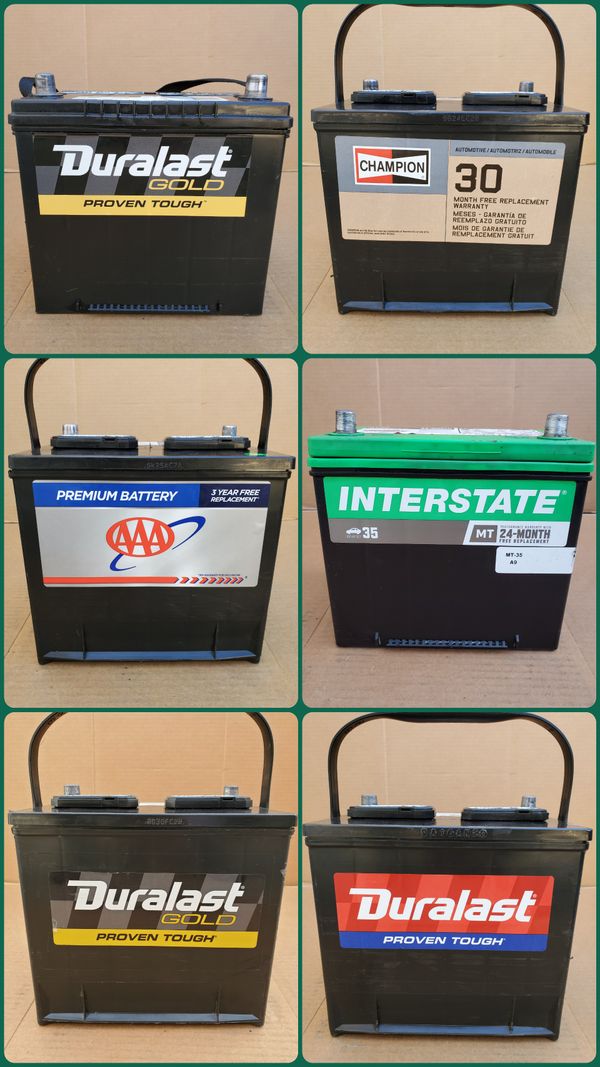

Instead two new markets have emerged: The Do-It-Yourselfers and startups. For EV batteries this has however proven difficult as the batteries often are warrantied in 8 years and OEMs have not been particularly interested in sourcing spare batteries from the ATFs. The first option is usually to sell the batteries back into the automotive market, as part of the main business for the ATFs, which’s revenue come from selling spare parts to workshops.
#USED BATTERIES FREE#
These prices are not part of this assessment.īatteries harvested from end-of-life vehicles are owned by the ATFs which essentially are free to sell them to who ever they like to. These batteries are priced in contracts between the owner, which usually is the OEM, and the user or refurbisher. The so often talked-about cases in Europe, in which EV batteries have been used in large and mid-sized energy storage systems, are most often using batteries which have become available through the first and third alternative. This will generate battery packs, often in very good conditions which now can be used in other solutions.
#USED BATTERIES UPGRADE#
The third way is when a car maker offers an upgrade of the battery to the car owner, like for instance increasing the capacity from 20 to 40 kWh. This is how most batteries become available for reuse today. However, if the car is dismantled the ATF will seek out to sell the battery to the highest bidder. The ATF will assess the vehicle and might on some markets, under certain circumstances, repair the vehicle and put it on the road again but more often the wreck, with the battery, will be exported to countries with high demand for EVs and where repairs are cheaper.

The second route is when a car is involved in an accident and the insurance company chose to write off the vehicle and sell it to an authorised treatment facility, an ATF. Many times a remanufacturing process yield battery modules which are not good enough for reuse in a car but which can be reused in other applications. In this case the battery can be repaired but also deemed for remanufacturing or reuse. The first is if the battery fails when it’s still warranted by the car maker. There are three different ways EV batteries can become available for reuse. In fact the explanation has almost no foundation in real life at all. However, this is not how batteries end their first life. What almost has become a school book explanation of second use of EV batteries is that they will be removed from the vehicles when they have reached 80% of their capacity, and then assessed for use in new applications such as stationary energy storage.

Obviously a look at our methodology is of equal importance. To explain this we need to address two important aspects: The nature of the market for reused batteries and the dynamics of pricing of used batteries. How is this possible? And if that’s the case, is at all sustainable over time? In our first assessment of prices for used batteries outside of China the average price per kWh for EV batteries (both BEV and PHEV) is $220, more than 60% higher than Bloomberg’s average. With prices for new EV batteries at these levels common sense would suggest that prices for used batteries would be significantly lower. That is still very low and an extraordinary price drop of 89% since 2010. When adjusted for volume the reported price was $105/kWh and on average the reported price for all kinds of EV batteries, in all markets, was $137 per kWh. The particular price was for LFP batteries used in Chinese electric buses. In the latest assessment of EV battery prices by Bloomberg New Energy Finance in December last year the price per kWh fell below $100 on pack level for the first time.


 0 kommentar(er)
0 kommentar(er)
